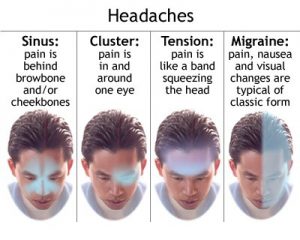Zeljko Kojadinovic, MD- Neurosurgeon and Pain Specialist
Headaches are one of the most common painful conditions, and are more common in women. In 90% of cases, they are the result of spasms (spasms) of the muscles of the head and neck.
Headaches are divided into primary, in which the headache is the primary disease, and secondary, in which the headache is a consequence of another disease. Primary headaches include migraines, tension headaches, and so-called cluster headaches. The causes of secondary headaches can range from mild, such as viruses, fever, eye diseases, sinus diseases, etc., to very serious ones, such as brain tumors, meningitis, intracranial bleeding, etc. Each of these forms of headache requires specialized diagnosis and treatment.
If you have a headache with a localized cause the determination of that cause is essential for effective treatment (inflamed muscle, stressed ligament, compressed nerve, etc). CT scans and MRI alone are not enough at all to achieve this. By our approach, we can do this and tailor the combination of modern medications specific just for you. Contact us for a consultation.
Tension-type headache
Tension-type headache – Occurs due to muscle spasms, and is also called a stress headache. These spasms are caused by tension, stress, incorrect position of the cervical spine, etc. This headache can also be caused by fever, stress, PMS, hangover, abstinence from coffee and alcohol, ear infection, throat infection, sinusitis, dental and gum disease, as well as some drugs. It can last from half an hour to a week.
The pain is in the form of pressure and tightness like a hoop, usually in the area of the forehead, temples, but also in the back of the head. It can be mild, no more than ordinary discomfort, but it can also be very severe. In addition to the pain, mild nausea may be present, but there is never vomiting.
In addition to headaches, patients often complain of other symptoms – bloating, tightness in the throat, palpitations, irritability, poor concentration and memory. It is, in fact, a long-term tension of the muscles of the head and neck as a physical expression of mental tension.
Chronic tension headaches are more common than episodic ones. The characteristics of the pain are the same, only the intensity is weaker. An important characteristic is that the feeling of pain never stops, although it varies in intensity from severe to almost no headache.
Migraine
A migraine is a type of headache that most often occurs on one side of the head and is very intense. If an analgesic is not taken, it lasts about 4 to 48 hours. It may be accompanied by nausea, vomiting and sensitivity to light, noise and odors. Sometimes, half an hour before the onset of the headache, visual disturbances, tingling, etc. (aura) can occur.
The cause of migraines is not known, but it is believed that some mechanism triggers the expansion and narrowing of blood vessels in the brain.
The examination is the most important element of a migraine diagnosis. Often patients are treated under a misdiagnosis of sinusitis, tension headache, neuralgia, cluster headache, etc.
Treatment involves taking medication during an aura or at the beginning of a headache attack to stop it. Classic painkillers are most often taken – ibuprofen, diclofenac, etc. After a certain amount of time, these drugs can cause gastritis (inflammation of the gastric mucosa). Other options are the triptan drugs (Almotriptan, Eletriptan, Frovatriptan, etc.). They are not recommended for patients with some heart diseases.
If headache attacks are frequent, preventive treatment is necessary. This can make the attacks go away or become significantly milder. There are different means of prevention. Initially, the factors that contribute to the onset of the attack should be identified and eliminated. In addition, different groups of drugs can be used: beta-blockers, certain antiepileptics and antidepressants. Each of these drugs has indications and contraindications and experience is needed to choose the right drug in the appropriate dose that will significantly reduce the number of headache attacks.

Occipital headaches
Occipital headaches are very common. In many cases, they are misdiagnosed as neck pain, cervical syndrome, migraine, tension headache,… This does not mean that the mentioned diseases do not have sometimes occipital locations, but that in case that their treatment does not lead to improvement, it should be determined whether there are other causes of occipital headache.

